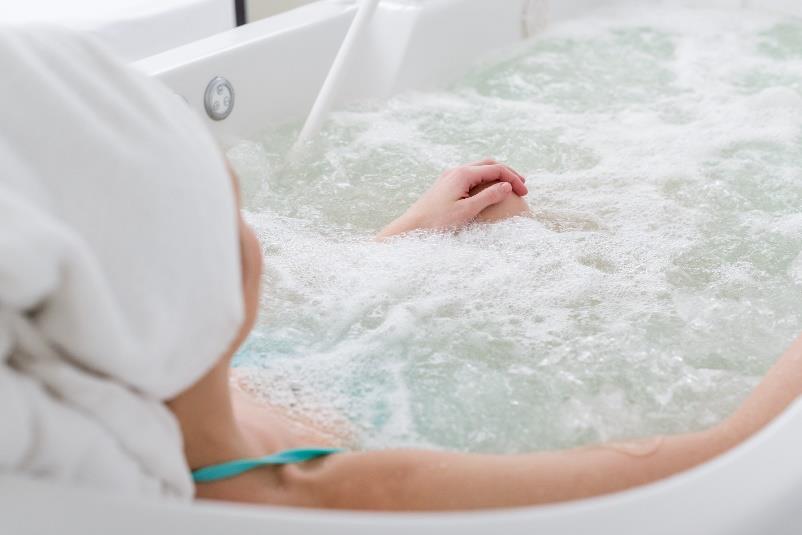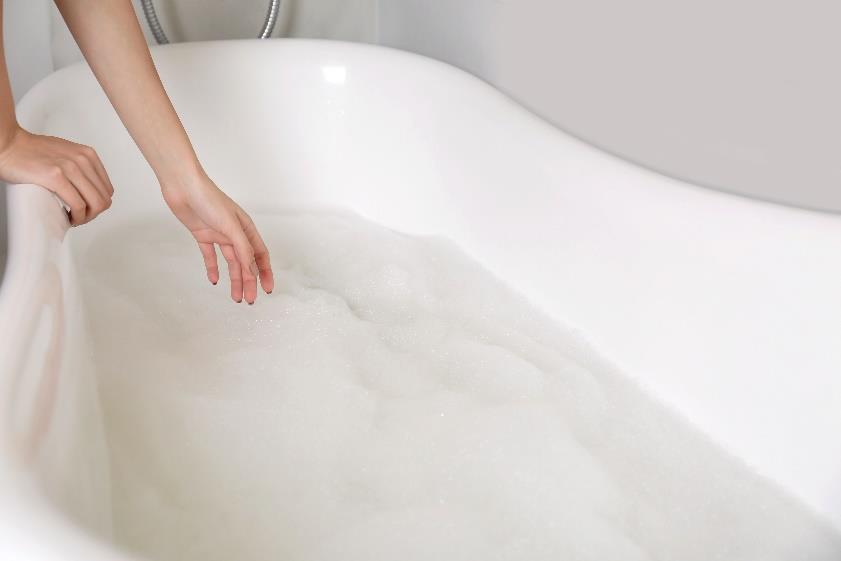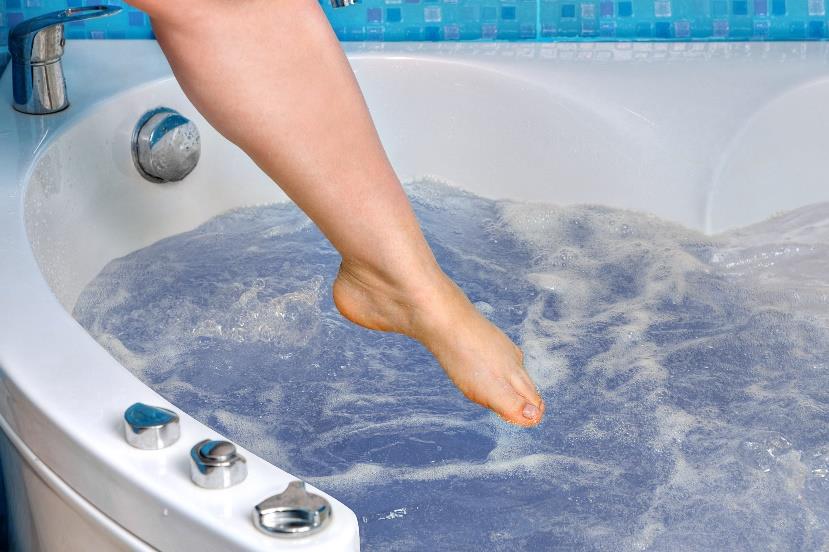Type 2 Diabetes is a chronic condition affecting millions of adult Americans. Though it’s a manageable disease, many people with diabetes often struggle with comorbidities—other diseases with similar underlying causes. Two of the more common conditions associated with diabetes are heart disease and stroke.
Diabetes can be managed through pharmacological treatments, as well as healthy and controlled lifestyle changes. As people with diabetes improve their physical health, they can reduce their risk of cardiovascular disease and other associated illnesses.
 Hydrotherapy may be promising for people with diabetes and cardiovascular disease. As a safe and natural therapy, hydrotherapy helps to reduce many of the effects of diabetes, including reducing blood sugar, blood pressure and body weight while improving blood circulation. Hydrotherapy can help many people recover from heart disease and diabetes by providing a safe way to simulate physical activity into daily life.
Hydrotherapy may be promising for people with diabetes and cardiovascular disease. As a safe and natural therapy, hydrotherapy helps to reduce many of the effects of diabetes, including reducing blood sugar, blood pressure and body weight while improving blood circulation. Hydrotherapy can help many people recover from heart disease and diabetes by providing a safe way to simulate physical activity into daily life.
The Link Between Diabetes, Heart Disease and Stroke
While diabetes, heart disease and stroke are three different conditions that can occur independently, they often occur together. Due to similar underlying risk factors, people who are at risk for developing one of these conditions are often at risk for the others.
According to the National Institute of Diabetes and Digestive and Kidney Diseases, adults with diabetes are nearly twice as likely to die from heart disease or stroke as adults without diabetes.
But what’s the link between these three conditions? People with diabetes have high blood sugar levels. Over time, living with diabetes strains the nerves that control the blood vessels, leading to damage to the heart. The longer someone has diabetes and heart disease, the longer they are at risk of stroke.
A 2018 research review published journal Cardiovascular Diabetology examined ten years’ worth of literature involving cardiovascular and diabetic patients. The researchers found that nearly one-third of diabetes patients also had cardiovascular disease, including various forms of heart disease and stroke.
About Diabetes
Diabetes is a disease caused by high blood sugar levels. In a healthy body, your pancreas releases a hormone called insulin, which helps your cells absorb glucose (sugar) from the food you eat. Glucose fuels your body so you can carry out your everyday functions. When the pancreas stops making enough insulin, your cells no longer absorb glucose properly. Instead, the glucose builds up in the blood, causing high blood sugar levels.
A person who has chronically high levels of blood sugar eventually develops diabetes. Many complications can result from having diabetes long-term. One of the most serious complications is diabetic neuropathy—nerve damage in the blood vessels causing loss of sensation in the extremities.
According to the CDC’s National Diabetes Statistics Report 2020, over 34 million U.S. adults are living with diabetes—a number that has been consistently increasing since 1999. Most people with diabetes are 45 years and older, as diabetes risks increase with age. People who are overweight or have a family history of diabetes are also more likely to develop the disease.
About Heart Disease
 Over time, people with diabetes have an increased risk of developing heart disease. Having high blood sugar levels leads to damaged blood vessels, putting people at risk of cardiovascular problems.
Over time, people with diabetes have an increased risk of developing heart disease. Having high blood sugar levels leads to damaged blood vessels, putting people at risk of cardiovascular problems.
Heart disease is a broad term describing any kind of condition that affects the heart. With diabetes-related heart disease, the main cause is the added pressure placed on the blood vessels. People with diabetes also tend to be overweight and have hypertension, also known as high blood pressure. Hypertension constricts the arteries, forcing more blood through a narrower passage. Over time, the heart has to work harder to pump the same amount of blood, which puts the person at risk for heart attack and stroke.
People with diabetes also tend to have high levels of bad cholesterol and high triglycerides, both of which lead to hardening of the arteries. According to the CDC, hardening of the peripheral arteries in the legs and feet is a common first sign of heart disease in people with diabetes.
About Stroke
Stroke is caused by a lack of blood flow to the brain, whether through a blockage, such as a clot (ischemic stroke), or a burst blood vessel (hemorrhagic stroke). As blood flow to the brain gets restricted, brain cells begin to die off. The most common symptoms of a stroke are face drooping, arm weakness and speech difficulty. Some people become permanently paralyzed after a stroke and experience problems with memory and learning.
While strokes can be caused by many different factors, diabetes is one of the known medical risk factors for stroke. People with diabetes tend to have high rates of systemic inflammation as well as hardened and constricted arteries. Combined, these three factors lead to an increased risk of stroke.
Diabetes is a manageable disease. Many of the same treatments and lifestyle management interventions that mitigate diabetes can also mitigate your risk of heart disease and stroke.
Hydrotherapy Benefits for Diabetes and Cardiovascular Health
According to the Mayo Clinic, diabetes management involves making important lifestyle adjustments and monitoring daily routines. In combination with insulin and other diabetes medications, people with diabetes can benefit from lifestyle interventions like increased exercise and better nutrition.
 Other natural therapies that increase blood circulation, decrease inflammation, reduce blood pressure and promote safe rehabilitation are important to incorporate into diabetes management.
Other natural therapies that increase blood circulation, decrease inflammation, reduce blood pressure and promote safe rehabilitation are important to incorporate into diabetes management.
One promising natural diabetes treatment may be hydrotherapy—the use of warm and hot water to help promote natural well-being. Hydrotherapy is an easy, safe and accessible way that people with diabetes can use therapeutic baths at home in a hydrotherapy bathtub.
Below are the possible benefits of hydrotherapy related to diabetes and diabetic neuropathy.
1. Controls Blood Sugar Level
One of the most important direct links between hydrotherapy and diabetes is its apparent ability to help control blood sugar levels.
A Japanese study recently found that frequent hot water bathing among diabetes patients was associated with lower blood sugar levels compared to patients who bathed less often. The results of the questionnaire also found that hot baths were associated with decreases in body weight, waist circumference and blood pressure.
These results echo similar findings from a 2000 study published in the New England Journal of Medicine. It reported that diabetes patients who soaked in a hot tub for 30 minutes daily over a three-week period had reduced blood sugar levels.
A similar study found that patients with diabetes who bathed in hot water had a 10% lower peak blood sugar level compared to when they exercised. After an hour-long hot bath, the calorie expenditure in these patients was roughly equivalent to that of a 25-30 minute walk.
Further, a 2020 study published in the journal Complementary Therapies in Clinical Practice reported that patients who underwent aquatic exercise and massage therapies showed greater improvements in blood sugar levels compared to patients who received just aquatic exercise or massage therapy alone.
Researchers also found that aquatic exercise with massage improved levels of Nerve Growth Factor (NGF)—a protein involved in regulating neurons. This is particularly beneficial for patients with neuropathy, as it may help repair damaged nerves.
All these findings suggest that hydro-massage bathtubs can act as a potential at-home therapy for helping to manage blood sugar and other diabetes-related risk factors. Given its potential to promote NGF, patients may consider using hydrotherapy for diabetic neuropathy.
2. Reduces Blood Pressure
Since many patients with diabetes experience hypertension, finding safe and effective ways to reduce blood pressure is essential for overall health and well-being.
In multiple studies, hydrotherapy had positive outcomes for reducing blood pressure in people with diabetes and heart disease.
In the previously mentioned Japanese study, 1,297 patients with diabetes were asked about their bathing frequency. After adjusting their results for age, sex and blood pressure medications, the researchers found that those who bathed more frequently had lower blood pressure. This study demonstrates a correlation between regular hot bathing and lower blood pressure in diabetes patients.
Similar findings were found among participants of a 2000 clinical trial, which compared the effects of immersion in water of varying temperatures. Healthy adults were asked to soak for one hour in water that was 32, 20 and 14 degrees Celsius (90, 68 and 57 degrees Fahrenheit).
Results published in the European Journal of Applied Physiology indicate that after soaking in 32-degree Celsius water for one hour, participants had 11% lower systolic blood pressure (the top number) and 12% lower diastolic blood pressure (the bottom number) compared to participants who remained at ambient temperature. They also had a 15% reduced heart rate.
Further findings from a 2018 clinical trial in Finland showed that in participants with at least one cardiovascular risk factor, mean systolic and diastolic blood pressure dropped by 5% and 9%, respectively, after a 30-minute sauna session. The results, which were published in the Journal of Human Hypertension, also showed that participants’ blood pressure levels remained lower even 30 minutes after the sauna session compared to pre-sauna levels.
Finally, a 2009 study published in the journal Cardiovascular Ultrasound found that patients with chronic heart failure who underwent warm water immersion therapy twice weekly for eight weeks had 7% reduced blood pressure.
The researchers concluded that patients with heart disease can benefit from a hot water immersion regime.
Managing diabetes-related risk factors, like hypertension, is crucial to treating diabetes. Hydrotherapy and hot water bathing appear to be safe and effective methods for potentially reducing blood pressure and managing diabetes-related heart disease.
3. Improves Blood Circulation
One of the complications of long-term diabetes is poor circulation. As blood vessels become damaged due to high blood sugar levels, the veins and arteries become less efficient at delivering oxygen and nutrient supplies to cells and tissues throughout the body.
As a result, diabetes patients with poor blood flow may experience prolonged wound healing, which is why it’s common to develop skin infections, like foot ulcers. If wounds don’t heal properly, it can lead to the need for foot amputations. Another complication of poor circulation in people with diabetes is Critical Limb Ischemia (CLI). CLI impairs functioning in the extremities, and they tend to develop redness and swelling. In severe cases, toes will turn gray or black.
Finding safe and natural ways to improve circulation is vital for diabetes patients. One such solution is at-home hydrotherapy.
Does hot water help blood circulation? Several studies have found that heat exposure leads to improved peripheral blood flow, meaning better circulation to the extremities. You can achieve heat exposure by bathing in a therapeutic bathtub, such as whirlpool tubs or jetted bathtubs.
Diabetes patients may also gain additional benefits from the various personal soaker tubs with massage jets. Massage is an effective natural therapy for boosting blood circulation as it promotes better blood flow, helping deep tissues achieve the oxygen and nutrients they need.
The combination of heat and massage therapy you gain from hydro-massage bathtubs may help boost blood circulation and reduce the risk of diabetes complications.
4. Lowers Body Weight
Keeping a healthy weight is important in diabetes management. Being overweight is a risk factor for developing diabetes complications, including heart disease and stroke. While taking insulin better helps cells take up glucose, consuming too many calories causes excess glucose to build up as fat. The Mayo Clinic recommends that diabetes patients manage their weight through a balanced diet and sufficient daily exercise.
Several studies, including those previously mentioned, have found that soaking in hot water or bathing in a sauna at high heat levels stimulates metabolic activity, leading to weight loss over time.
As the heat causes metabolic activity to increase, the body expends calories, the same way it does while exercising. As people increase their caloric expenditure, they eventually start to burn fat and lose weight.
Developing a daily or nightly routine of soaking in a hydro massage tub may help safely promote weight loss.
5. Promotes Exercise Rehabilitation
Patients with diabetes who have heart disease or have experienced a stroke are often placed on a rehabilitation program to help improve their well-being and quality of life. Diabetes, heart disease and stroke rehabilitation programs often involve regular physical activity. Exercise has numerous benefits for people with diabetes. It helps improve cardiovascular health by reducing blood pressure, promotes weight loss and helps manage stress.
Unfortunately, many patients with diabetes are unable to exercise vigorously or even moderately, so getting the required physical activity can be difficult. Hot water immersion may be an effective alternative to exercise for patients who can’t perform traditional physical activity.
A 2009 article published in the journal Clinics describes how hydrotherapy is considered a well-tolerated method of exercise rehabilitation for heart failure patients. The authors conclude that for patients with limited mobility, hydrotherapy is a safe and effective alternative to conventional exercise.
Further, a 2003 clinical trial found that patients with chronic heart failure had better cardiovascular health after six weeks of at-home hydrotherapy. The patients experienced improved resting heart rate, reduced blood pressure and overall better tolerance to exercise after the hydrotherapy program.
Diabetes patients with mobility issues can still incorporate physical activity into daily life through at-home hydrotherapy exercises in their bathtub
How to Use Hydrotherapy for Cardiac Rehabilitation and Diabetes Management
 For people living with type 2 diabetes and other complications, like neuropathy, heart disease or stroke, improving quality of life is vital. Many safe, at-home and natural therapies exist to help rehabilitate patients with diabetes and manage their condition.
For people living with type 2 diabetes and other complications, like neuropathy, heart disease or stroke, improving quality of life is vital. Many safe, at-home and natural therapies exist to help rehabilitate patients with diabetes and manage their condition.
For many patients, hydrotherapy can be an accessible, affordable, safe and effective way to improve well-being.
Hydrotherapy for type 2 diabetes has direct effects on blood sugar control, blood pressure management, weight loss and circulation and may replace traditional exercise for people with mobility issues. Additionally, hydrotherapy has benefits for reducing stress, boosting mood, relieving pain and improving sleep.
Patients can benefit from hydrotherapy at home in the form of therapeutic soaker tubs. Heated soaker tubs, whirlpool and jetted tubs and hydro-massage tubs provide the ultimate therapeutic experience. Warm water bathing in a tub with whirlpool or air jets, accompanied by massage technology, can help you achieve all the benefits of hydrotherapy for stroke patients, cardiac rehabilitation and diabetes.
*Hydrotherapy plans for treatment related to Type 2 Diabetes should be reviewed by a healthcare professional. The information contained on this site is not a substitute for professional medical advice, diagnosis, or treatment. Hydro Massage Products makes no claims for treating, healing, or curing any health conditions. All information on this site is for general information and educational purposes only. Hydro Massage Products encourages you to confirm any information obtained from or through this web site, regarding health claims from customers or dimensions of bathtubs.
Sources:
1. https://www.niddk.nih.gov/health-information/diabetes/overview/preventing-problems/heart-disease-stroke#link
2. https://cardiab.biomedcentral.com/articles/10.1186/s12933-018-0728-6
3. https://www.niddk.nih.gov/health-information/diabetes/overview/what-is-diabetes
4. https://www.mayoclinic.org/diseases-conditions/diabetes/symptoms-causes/syc-20371444
5. https://www.cdc.gov/diabetes/pdfs/data/statistics/national-diabetes-statistics-report.pdf
6. https://www.cdc.gov/diabetes/library/features/diabetes-and-heart.html
7. https://www.ncbi.nlm.nih.gov/pmc/articles/PMC5298897/
8. https://www.mayoclinic.org/diseases-conditions/diabetes/in-depth/diabetes-management/art-20047963
9. https://www.eurekalert.org/pub_releases/2020-09/d-ssr091820.php
10. https://www.ncbi.nlm.nih.gov/pmc/articles/PMC3249697/#ref147
11. https://www.diabetes.co.uk/news/2016/aug/hot-bath-could-boost-type-2-diabetes-management-97414776.html
12. https://www.sciencedirect.com/science/article/abs/pii/S1744388119309855
13. https://www.ncbi.nlm.nih.gov/pmc/articles/PMC4049052/
14. https://pubmed.ncbi.nlm.nih.gov/10751106/
15. https://pubmed.ncbi.nlm.nih.gov/29269746/
16. https://cardiovascularultrasound.biomedcentral.com/articles/10.1186/1476-7120-7-33
17. https://www.diabetes.co.uk/diabetes-complications/poor-blood-circulation.html
18. https://www.ncbi.nlm.nih.gov/pmc/articles/PMC4049052/
19. https://www.mayoclinic.org/diseases-conditions/diabetes/in-depth/diabetes-management/art-20047963
20. https://www.ncbi.nlm.nih.gov/pmc/articles/PMC2728200/
21. https://pubmed.ncbi.nlm.nih.gov/14564334/






